By Allyn Vannoy
On New Year’S Day 1945, Brig. Gen. Anthony G. McAuliffe, temporary commander of the U.S. 101st Airborne Division, visited the XIX Tactical Air Command (TAC) “Raiders” group. To its commander, Lt. Col. Leslie R. Bratton, he stated, “If it had not been for your splendid cooperation we should never have been able to hold out. We were able to hold the vital road junction at Bastogne with your aid …”
Holding the crossroads town in Belgium had been a key to the Allied success against the German Ardennes offensive, known as the Battle of the Bulge. In the weeks after Bastogne, as the Germans were driven back, the Allied air assault on German forces reached a crescendo when the XIX TAC interrupted German withdrawal efforts on January 22. Attempting daylight operations, the Germans clogged roads between Prum and Vianden and along the Our River, streaming eastward in 10-mile-long columns, vehicles bumper to bumper.
Concentrations of German vehicles had been spotted early in the day by an Army liaison pilot. Relays of Republic P-47 Thunderbolt fighter-bombers raced to the area. Diving through breaks in the clouds, the P-47s hammered the columns of trucks, tanks, selfpropelled guns, and horse-drawn wagons. For eight hours they punished the German convoys. By nightfall XIX TAC estimated that it had destroyed over 1,100 vehicles.
“Achtung, Jabos!” had become a standard German alert (Jabos was short for Jagdebombers). The German High Command would blame fighter-bomber attacks in many instances for their inability to advance or to stop Allied attacks.
The development of a U.S. air-ground support system of operations had been impeded by prewar controversies over the role of air power. Army Air Corps officers lined up behind the strategic role of bombing, while Army officers insisted that their World War I experience supported a tactical role for aircraft. Unresolved, the debate persisted into World War II, with Army aviators believing autonomy was the only way the role of strategic bombing could be secured. During this period, air-ground doctrine suffered from having to satisfy the two objectives. Doctrine, while supporting the ground commander’s demand for direct support, accepted the aviators’ position that interdiction offered the best means of providing that support.
The early war successes of the German Luftwaffe with tactical aviation resulted in the Army Air Corps making a limited accommodation to the opposing viewpoints. The new doctrine declared both roles to be vital and stated that close cooperation with ground forces was to be given the same weight as strategic bombing.
By the time of Operation Torch, the Allied invasion of North Africa on November 8, 1942, an air-ground system had been organized to implement this doctrine. As a result, an air force consisting of strategic and tactical aircraft was created. One component of this force was an Air Support Command under control of an Air Corps officer supporting a field army. The command was to be composed of fighters, bombers, and observation aircraft. The air support commander was to collaborate with the Army commander, who was to determine the level of air support required and plan its allocation. Air support control units were to be colocated at corps command posts, and air support parties were to be dispatched to divisions that had received air allocations.
This system was abandoned, however, after the disaster at Kasserine Pass in February 1943, when, at the insistence of senior U.S. airmen, the methods and organization of the British Royal Air Force’s Desert Air Force were adopted. Air Corps officers charged that airpower under control of ground commanders had been wasted on countless small and poorly selected targets. The solution was centralized control under a senior airman.
Before changes could be implemented, airground cooperation hit bottom during operations on the island of Sicily. The participating air forces refused to coordinate their plans with the other services, spent much of their time searching for a meager enemy air force, and as a result, provided only 18 missions a day on average to support General George S. Patton’s Seventh Army.
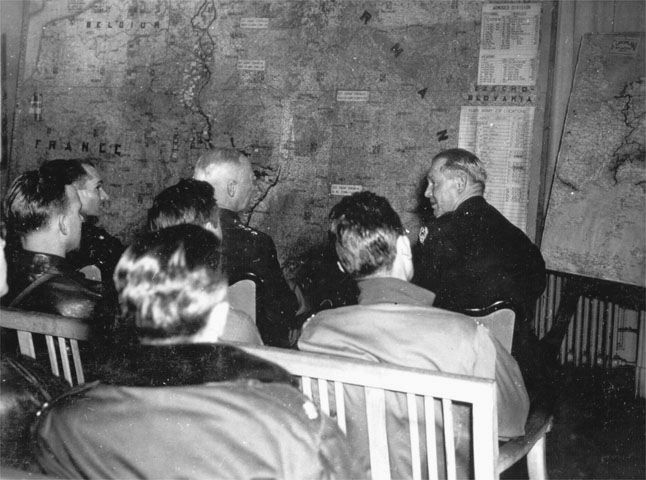
In the midst of this poor performance, the Army Air Corps implemented new doctrine, centralizing command and control in the hands of the air commander, and set priorities for the employment of tactical air assets. These priorities relegated close air support missions to lowest importance behind air superiority and isolation of the battlefield or interdiction. Air strikes against targets within range of ground weapons were considered ineffective and wasteful. The larger and more profitable air targets, which would be selected by the air commander, were to be found along enemy lines of communication.
Part of the challenge to air-ground operations was that some ground officers did not know how close a strike by a P-47 or Lockheed P-38 Lightning fighter-bombers could come to the front line without hitting their own troops. They sometimes did not know whether to strafe or bomb an enemy position. They did know, however, that they had a tremendous striking force at their disposal. Better teamwork was required, including someone to direct the planes and someone to know where they were most needed.
The effectiveness of air-ground cooperation was reported to have markedly improved during the Fifth Army’s campaign in Italy. Army and Air Corps headquarters were located together so that plans could be developed and integrated at daily commanders’ conferences. G-3 (operations) sections dedicated to air efforts were established at army, corps, and division levels, and air liaison officers were made available for temporary duty.
G-3 air sections were expanded to include one or more ground liaison officers (GLO). Nicknamed “Rover Joes,” because they moved with frontline battalions using jeep-mounted VHF radios, the GLOs developed procedures for directing close air support missions. Mission requests were relayed from frontline battalions through G-3 air nets to army level, where they were handed to the colocated Air Corps command post. If approved, a GLO at division level was sent to the requesting unit with instructions on radio frequency, call sign, and the time the mission would be flown. The GLO contacted the aircraft, identified the target using smoke, reported on enemy air defenses, and used panel markers to identify friendly force locations.
The directing of air strikes in the mountainous Italian terrain produced numerous friendlyfire incidents, which were later reduced by the use of Air Corps controllers and the prewar concept of a bomb line or fire support coordination line, which further defined target areas. In June 1944, Fifth Army experimented with Air Corps controllers flying in observation aircraft. The use of these airborne controllers, nicknamed Horseflies, continued throughout the war.
On January 4, 1944, XIX Air Support Command (later renamed XIX Tactical Air Command) was activated at Middle Wallop, England, to eventually support General Patton’s Third Army in Western Europe. General Otto P. “Opie” Weyland was placed in command of the XIX TAC on February 4, 1944, replacing Maj. Gen. Elwood R. Quesada, who assumed command of the IX Air Support Command (later IX TAC).
General Weyland, born in California and raised in Texas, graduated from Texas A&M University in 1923 with a degree in engineering. While working for Western Electric, he became interested in flying and decided to join the Army Air Corps. He received flight training in 1924, became an advanced flying instructor at Kelly Field, Texas, and commanded a reconnaissance squadron in Hawaii in the 1930s. In 1938, he attended Air Corps Tactical School, where he finished first in his class. At the time of America’s entrance into World War II, he was leading the 16th Pursuit Group in the Panama Canal Zone but was soon transferred to a staff position in Washington, D.C.
Grueling cross-Channel operations, as part of the pre-D-Day softening-up process, began on April 13, 1944. Targets included enemy rail and motor transport. Prior to D-Day the XIX TAC also engaged in air operations that resulted in the destruction of 176 enemy planes, 115 in the air. Pilots often flew three or four missions a day during this period.
In preparation for eventual deployment, the command’s enlisted men and officers spent time at RAF operational centers learning from the British about coordinating their activities with the greater overall invasion plan. Simultaneously, others trained with ground operations personnel.
Although the Allies had a large number of fighter-bombers based in England, they knew that the distance to Normandy from these bases would severely limit the effectiveness of the aircraft. Drawing on their experience in previous campaigns, Ninth Air Force command made invasion plans based on the concept that mobility on the ground provided for flexibility in the air. Fundamental to the mobility of a tactical air force was the provision of airfields where, when, and with the types required by the tactical commanders. To this end they organized, trained, and equipped units to move individually or collectively at a moment’s notice.
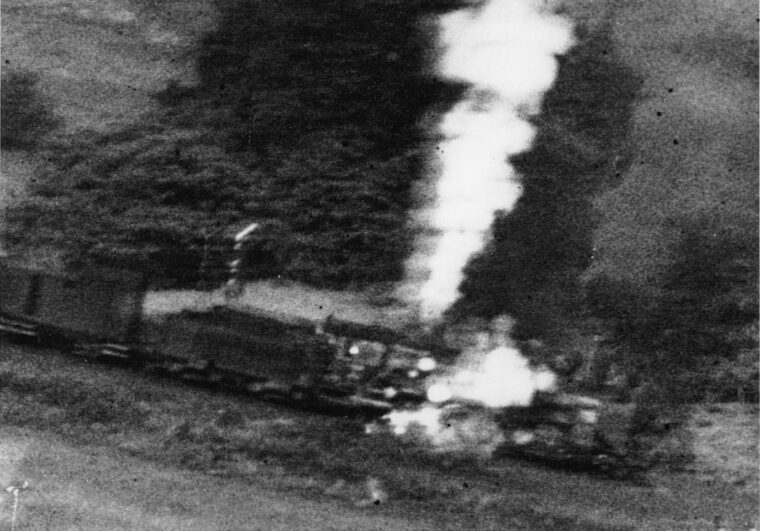
Engineers began constructing air installations in France soon after the initial landings. By D+5, the Ninth Air Force had three fighterbomber airfields under construction in the Omaha beachhead and one near Utah Beach. By D+16, five fighter-bomber groups, each with about 72 aircraft, were based in Normandy. Eight days later, nine all-weather airfields were completed, and seven others were under construction.
By July 31, 17 fighter groups were fully operational from bases in France, supporting 19 American ground divisions. The P-47s of the 405th Fighter Group had begun arriving at strip A-8 on July 11. The 826th Engineer Aviation Battalion built the runway at A-8 in only one day using prefabricated bituminous surfacing, also known as Hessian matting. Besides the runway, A-8 had 75 hardstands for the 405th and 36 hardstands for British De Havilland Mosquito night fighters that arrived in early August. Initially, A-8 was so close to the fighting that the 405th had to redirect takeoffs to the east, toward Utah Beach, to avoid German flak units.
Weyland’s air groups often moved onto airfields in the wake of the evacuating Germans. Control towers were erected on the edge of bomb-pocked runways recently used by the Germans, and aircraft repairs were made out in the open since the hangars had been destroyed. Airdrome squadrons, usually the first units to reach a landing strip, often performed near miracles in speedily rearming and refueling fighter and reconnaissance aircraft and repairing damaged planes.
To remain near the battle area during August and September 1944, when Allied armies were making rapid advances, eight fighter-bomber groups moved to new bases twice; one unit, the 354th, moved three times. Despite these efforts, the XIX TAC still had trouble building bases fast enough to keep up with the Third Army’s rapid advance.
The breakout from Normandy, Operation Cobra, began with a massive carpet-bombing raid on German positions in an area near St. Lo on July 25, 1944, followed by an infantryarmor attack. One week later, the Third Army and XIX TAC began an end run on enemy positions. As Patton’s armor advanced south and east toward Rennes, Nantes, and Laval, planes flew some 30 miles ahead of the armored spearheads in search of targets. Weather permitting, groups flew as many as five missions a day, some squadrons averaging over 11 hours aloft.
The Breton Peninsula was overrun in a few days. St. Malo surrendered August 17, while Brest continued to hold out. Because of the need for air support there and for the advance on Paris, the command was forced to conduct operations simultaneously on fronts 350 miles apart.
There were complications in air-ground cooperation that had not been anticipated. Patton’s troops advanced so rapidly that XIX TAC operations had to get larger scale maps to keep track of columns that ran off the edge of their maps. Pilots had to check their impulses to blow up every bridge they encountered. Wrecked bridges only served to slow progress. Front lines and bomb lines moved so fast that they made keeping situation maps up to date nearly impossible. Systems for rapid identification of ground units from the air were needed.
Despite an occasional diversion to dogfight with enemy fighters, the main focus continued to be ground support. When presenting Weyland with the Bronze Star for meritorious service, General Patton stated: “The superior efficiency and cooperation afforded this army by the forces under your command is the best example of the combined use of air and ground troops I have ever witnessed. Due to the tireless efforts of your flyers, large numbers of hostile vehicles and troop concentrations ahead of our advancing columns have been harassed or obliterated. The information passed directly to the head of the columns from the air has saved time and lives.”
In September, as the Third Army ground to a halt after occupying Nancy and coming within shelling distance of Metz, tactical air operations continued to evolve. But the XIX TAC was not the only tactical air command operating with U.S. forces in Western Europe. Quesada’s IX TAC operated to the north of XIX TAC with First Army, and Brig. Gen. Gordon P. Saville’s XII TAC operated to the south with Seventh Army.
Armored column cover tactics had been used in Italy; however, they were refined during the campaign in France. In a postwar interview, General Weyland described the technique: “All during the daylight hours when the ground forces were fighting or advancing, General Patton advanced in parallel columns normally, and always spearheaded by armor. I had liaison officers up in the lead tanks in every one of these columns––an Air Force officer riding the leading tank with a radio, so that he could talk with the aircraft. Then I had fighter-bombers, which preceded the columns, knowing where they were supposed to go. They would locate enemy opposition, tanks, troops, guns, or obstacles, or tank barriers, or what have you. Let them know, and in most cases [they] knocked out the opposition before the American tanks got there.”
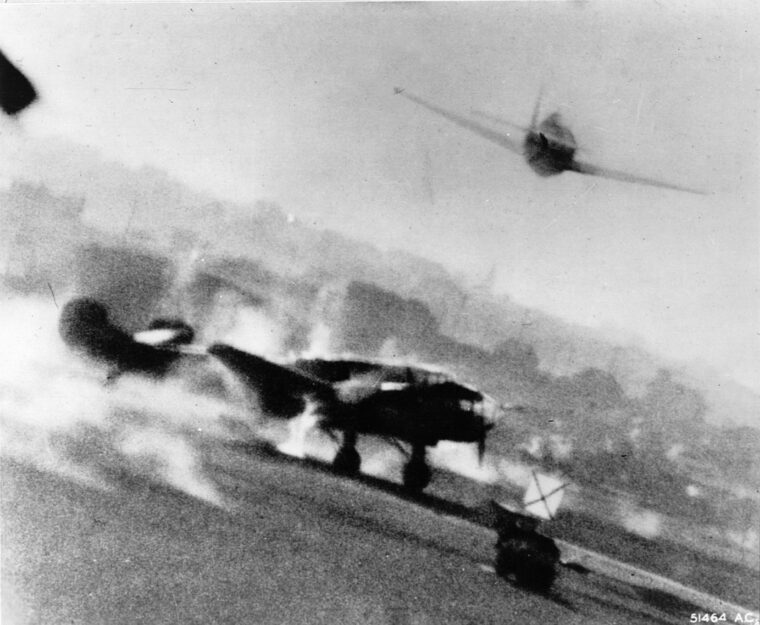
Both air and ground advocates agreed with Weyland that armored column cover proved quite effective. Air commanders had expected difficulty in enticing officers, mostly pilots, to accept ground liaison duty, but many volunteered and even competed for the job. In armored column cover operations tank crews and their air support officers would point out enemy concentrations as P-47s and North American P-51 Mustangs provided cover for the tanks in one-hour shifts with four aircraft per flight and four more on ground alert that could be called on if needed.
Weyland and Patton realized that having aircraft attack tactical targets contradicted the notion that it was a waste to use an airplane to knock out a target that artillery could strike. They defended the procedure as a time saver, acknowledging that although artillery could accomplish the task, by the time guns had been brought forward, positioned, and found the range, approximately two hours would be lost. Air support could be available in a few minutes.
Although TAC’s air groups concentrated on close air support, they were also involved in numerous other missions such as battlefield interdiction. Such operations were designed to isolate the battle area by eliminating targets beyond artillery range but still relatively close to the front. Interdiction was employed by combat squadrons in a variety of situations such as aiding Allied ground formations in their attempt to close the Falaise Gap and supporting river crossings south and east of Paris. Its most spectacular use was to protect Patton’s exposed southern flank along the Loire River. To be sure, XIX TAC did not perform this role alone, as the Army kept the region under surveillance with artillery observation planes, and ground patrols.
Air commanders did not distinguish between battlefield interdiction and deep interdiction. Deep interdiction did not, of course, rule out bombing and strafing targets of opportunity, but such missions were usually ordered by higher headquarters to strike prearranged targets, such as enemy troop concentrations, roads, rail lines, marshaling yards, and bridges. The focus of these missions gradually changed as Patton’s forces extended east. Because of the ground forces’ rapid advance, bridges were not to be destroyed, and rather than trying to stop enemy soldiers from coming into an area, the goal was to block their movement out.
The key principle of air support doctrine was the need to foster cooperation and acknowledgement of the equal status between the air and ground components. Both Patton and Weyland understood and supported this. In a postwar interview Weyland praised both Patton and their teamwork. “General George S. Patton was the finest field commander I have ever known…. Largely because of his prevailing leadership, relations between Third Army and XIX TAC were characterized by complete confidence in the other’s abilities.…”
Weyland, with Patton’s concurrence, put into practice the centralized control of airpower with decentralized execution. The two understood that Patton was to run the ground war while Weyland handled the air war. The XIX TAC commander described the process: “The decisions were mine as to how I would allocate the air effort. And we had a joint operations center with staff officers [from XIX TAC] and from his [Patton’s] forces.… They would feed in all their inputs. What they wanted and what not. We would try to support him, but we had other chores to do like maintaining air superiority, interdiction to the rear to clobber reserves, ammunition, supplies, and things like that so they wouldn’t be used against him, and so forth. He readily agreed to that [principle] and was faithful to it.”
While higher headquarters might determine that other tasks, such as bomber escort and support of critical operations elsewhere, required Weyland to divert some of his aircraft for a limited time, he still made the overall assignments for his area. His fighter group commanders then attempted to carry out his directives within the constraints of available fuel, aircraft, and pilots. Meanwhile, constant liaison was maintained up and down air and army command channels to ensure the allocation of both prearranged and immediate requests for air assets.
As an indicator of shifting priorities, XIX TAC lost 114 aircraft during August but only 60 in September, validating the maxim that close air support, in which pilots were heavily engaged in August, was riskier than dive-bombing and interdiction sorties, which was the primary emphasis in September. Weyland had concerns about air missions undertaken against fluid lines as they usually created difficulties with bomb safety lines representing the boundary between friendly and enemy ground troops. In fact, incidents during fighting near Falaise, especially on August 15, led the Allies to restrict and eventually call off air activity in that area.
U.S. commanders dealt with the problem by insisting on additional precautions. Maintenance teams were to make sure that white stars were painted on top of motor vehicles, and drivers were furnished with bright red and yellow ground panels. Pilots were cautioned not to fire unless they could definitely identify their targets. Apparently these measures, limited as they were, brought results as the number of incidents declined from August to September. Problems in communications remained during periods of highly fluid activity and were endemic to tactical air warfare.
The missions of reconnaissance, counter-air operations, and interdiction formed the basis of early tactical air thinking. As aircraft came to possess greater speed, durability, mobility, and firepower, other missions, including close air support and dive-bombing, became integral parts of an expanded list of air operations.
Top priority was given to gaining air superiority, second to isolating the battlefield, and third to providing direct support to ground forces. During Patton’s dash across France, however, top priority was given to covering the armored units rather than air superiority and interdiction. Interdiction was not considered as vital because of fast-moving ground forces, and air superiority had already been attained before the offensive began.
Techniques such as dive-bombing were sometimes learned the hard way. Some pilots executed their attacks so low that they were caught in the blasts of their own bombs. Others came back from strafing missions with branches caught in their undercarriages.
As the Third Army advanced, XIX TAC fighter-bomber attacks were intensified. An ordnance survey showed Thunderbolts and Mustangs were using five times as much ammunition per sortie as they did from D-Day to the St. Lo breakthrough and twice as much as they expended during the closing of the Falaise Gap.
In October, Northrop P-61 Black Widow aircraft added nightly “intruder” patrols to air operations. Equipped with radar and bristling with firepower from eight .50-caliber machine guns, the P-61s pounced on enemy rail and motor traffic. Germans who had heretofore ventured out under cover of night in comparative safety now were faced with unrelenting around-the-clock attacks.
By the autumn of 1944, enemy air activity had been reduced to sporadic actions and was eventually nonexistent near the front lines. The Luftwaffe had become cautious, seldom seeking combat. On one occasion more than 20 Messerschmitt Me-109s circled above a flight of four Mustangs that were strafing rolling stock, but the Germans did not intercede.
In December 1944, Third Army broke through the Maginot Line and entered the Saar Valley to assault Siegfried Line defenses along the German frontier. Fighter-bombers of XIX TAC spearheaded the advancing infantry and armor as they ranged ahead of the front lines to batter German positions. In a message to General Weyland, Maj. Gen. Manton S. Eddy, XII Corps commander, said, “I wish again to express my appreciation for the outstanding part contributed by units of your command in supporting the successful attack of the XII Corps on the Maginot Line.”
From January 1945 to the end of the war, XIX TAC used the lessons learned to continue its support of Third Army. However, the armies’ procedures varied. The U.S. First, Third, and Ninth Armies relied upon Air Corps communication channels, while Seventh Army relied upon Army communications. Consequently, while Third and Seventh Armies fought side by side, their air-ground support systems were not compatible. In support of Third Army, the XIX TAC dropped 17,486 tons of bombs and 3,205 napalm tanks and fired 4,599 rockets. Its efforts resulted in the destruction of 1,640 enemy planes, with the loss of 582 of its own aircraft from all causes.
Through 281 days of operation, the XIX TAC completed 1,767 tactical reconnaissance missions and 77 photo-recon missions while flying 7,326 total missions and 74,447 sorties. Its fighter bombers destroyed or damaged 3,833 tanks and armored vehicles, 38,541 motor vehicles, 4,337 locomotives, 2,585 railroad lines, 974 marshaling yards, 816 towns and villages, 3,664 factories, 220 supply dumps, 1,730 military installations, 2,809 gun installations, 295 highway and railroad bridges, 654 miscellaneous naval vessels, and 3,010 miscellaneous targets.
After the war, General Weyland went on to hold a number of important posts. In June 1951, he was sent to Tokyo to command the Far Eastern Air Forces and the United Nations Air Forces during the Korean War. He was widely recognized for his abilities in tactical air warfare, as demonstrated in 10 major campaigns in Korea, and he was promoted to four-star general in July 1952. He remained in Japan, assisting in the organization of that nation’s air defense forces, and he is known today as the father of the new Japanese Air Force. He directed the U.S. Air Force’s Tactical Air Command between 1954 and 1958, finally retiring in 1959. He died on September 2, 1979.
Author Allyn Vannoy has written extensively on a variety of topics related to World War II. He resides in Hillsboro, Oregon.
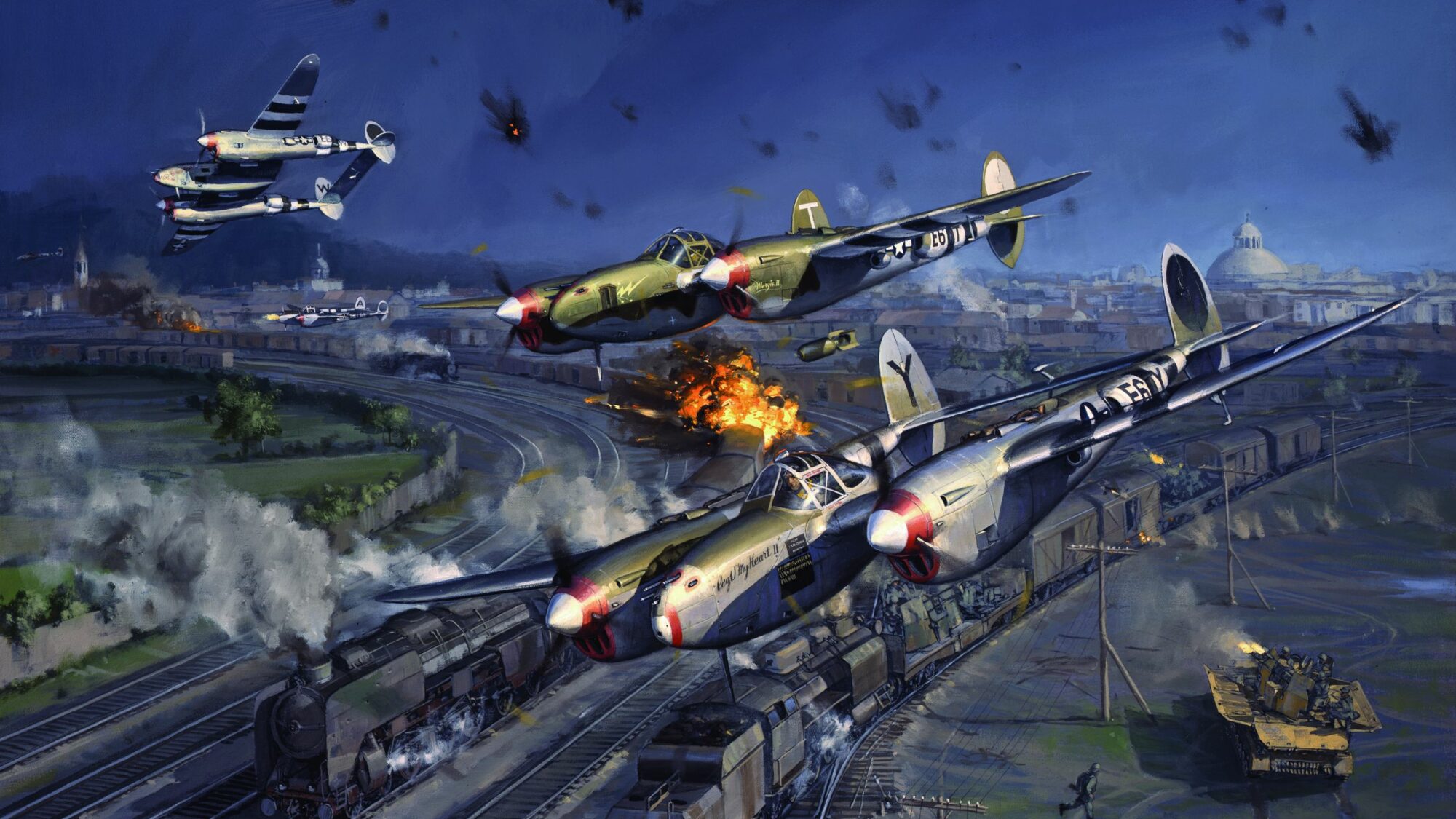
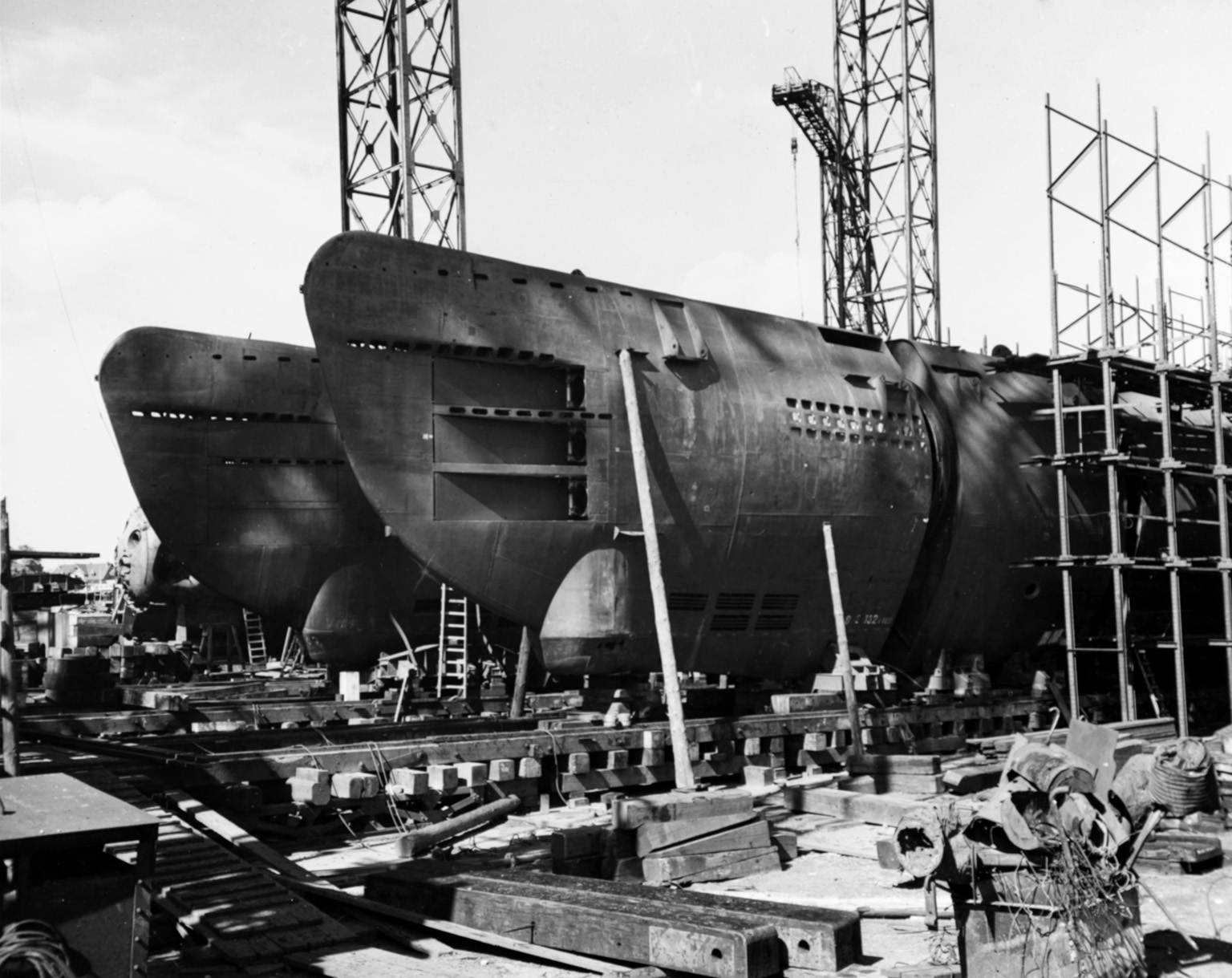
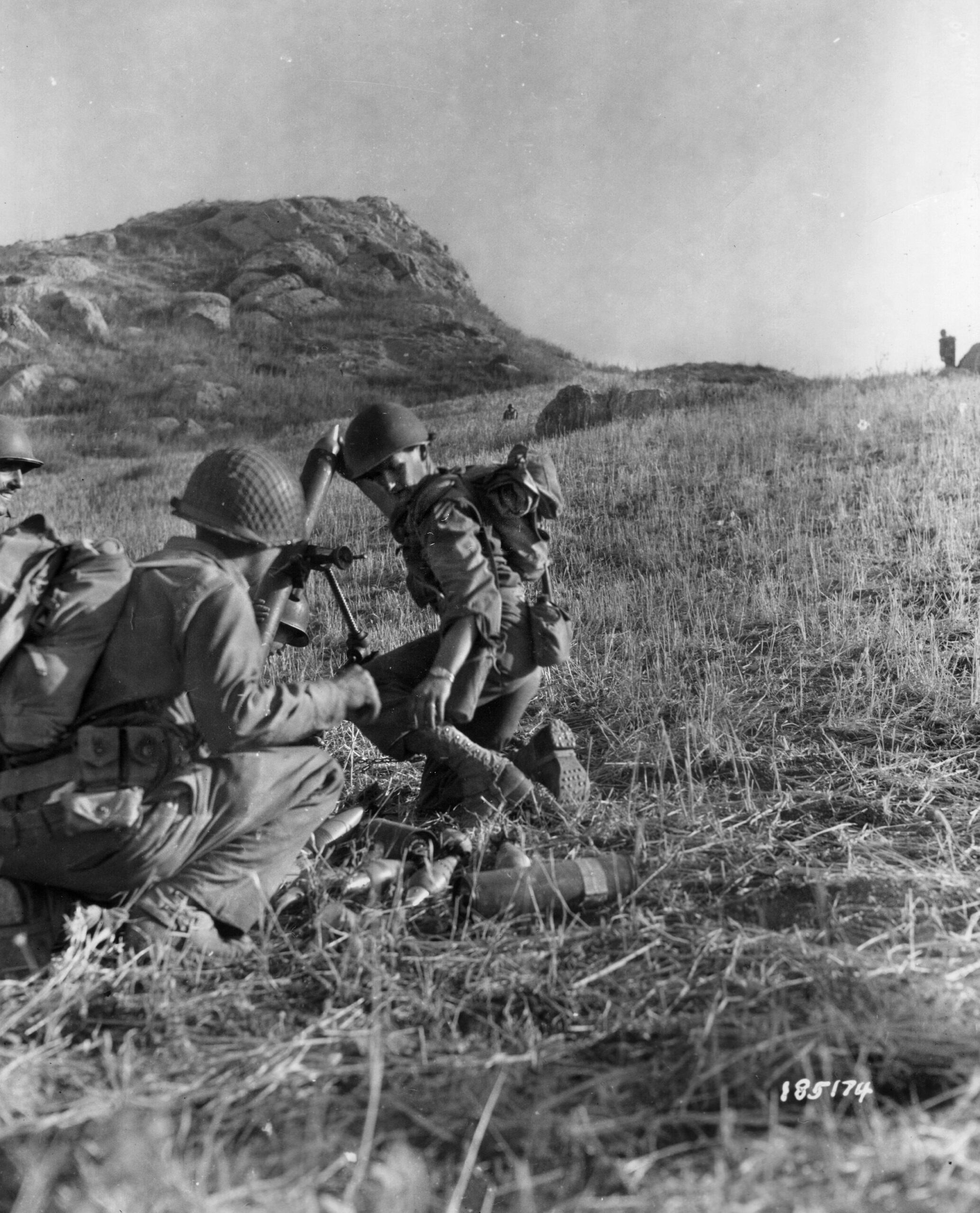

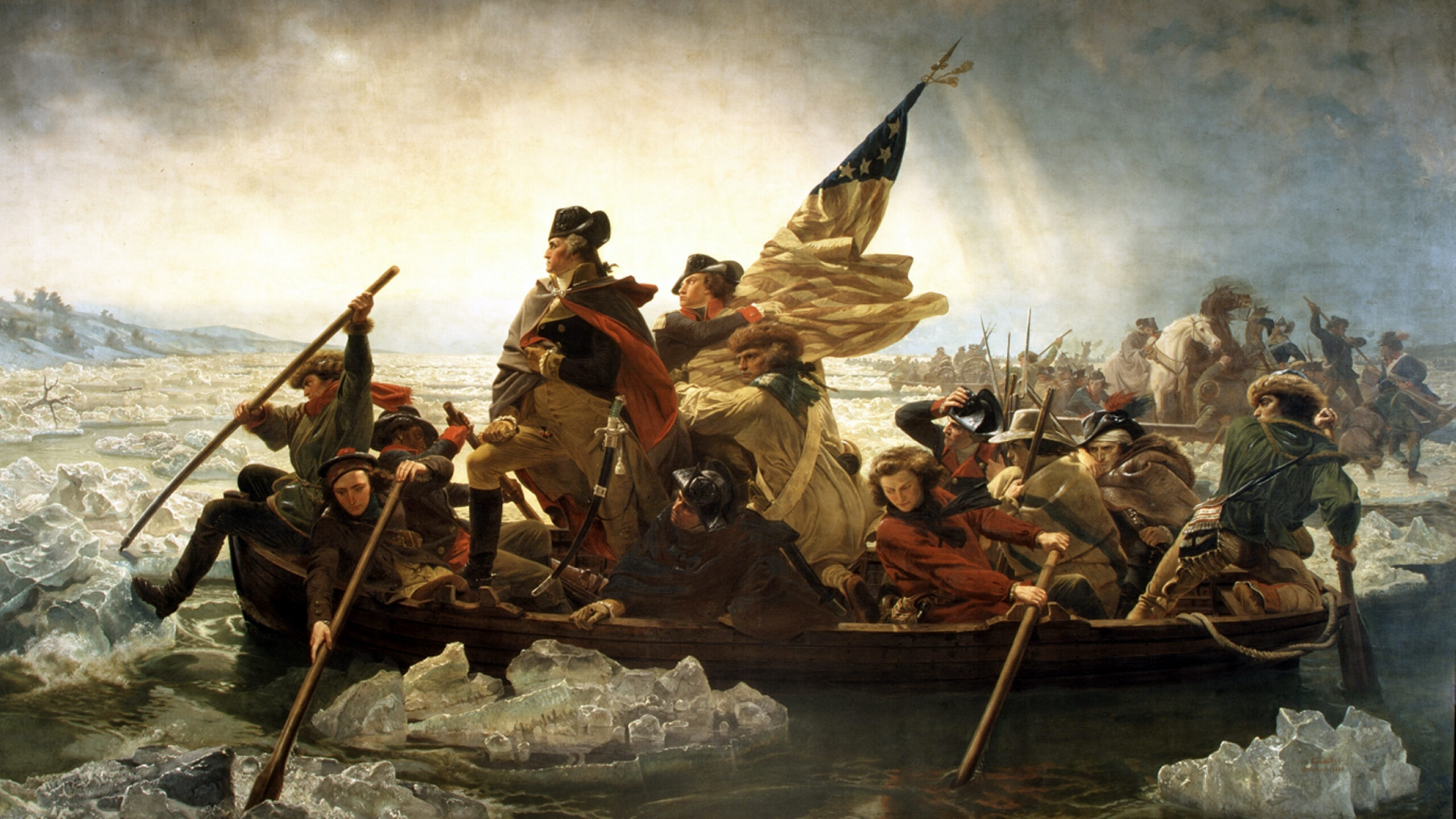
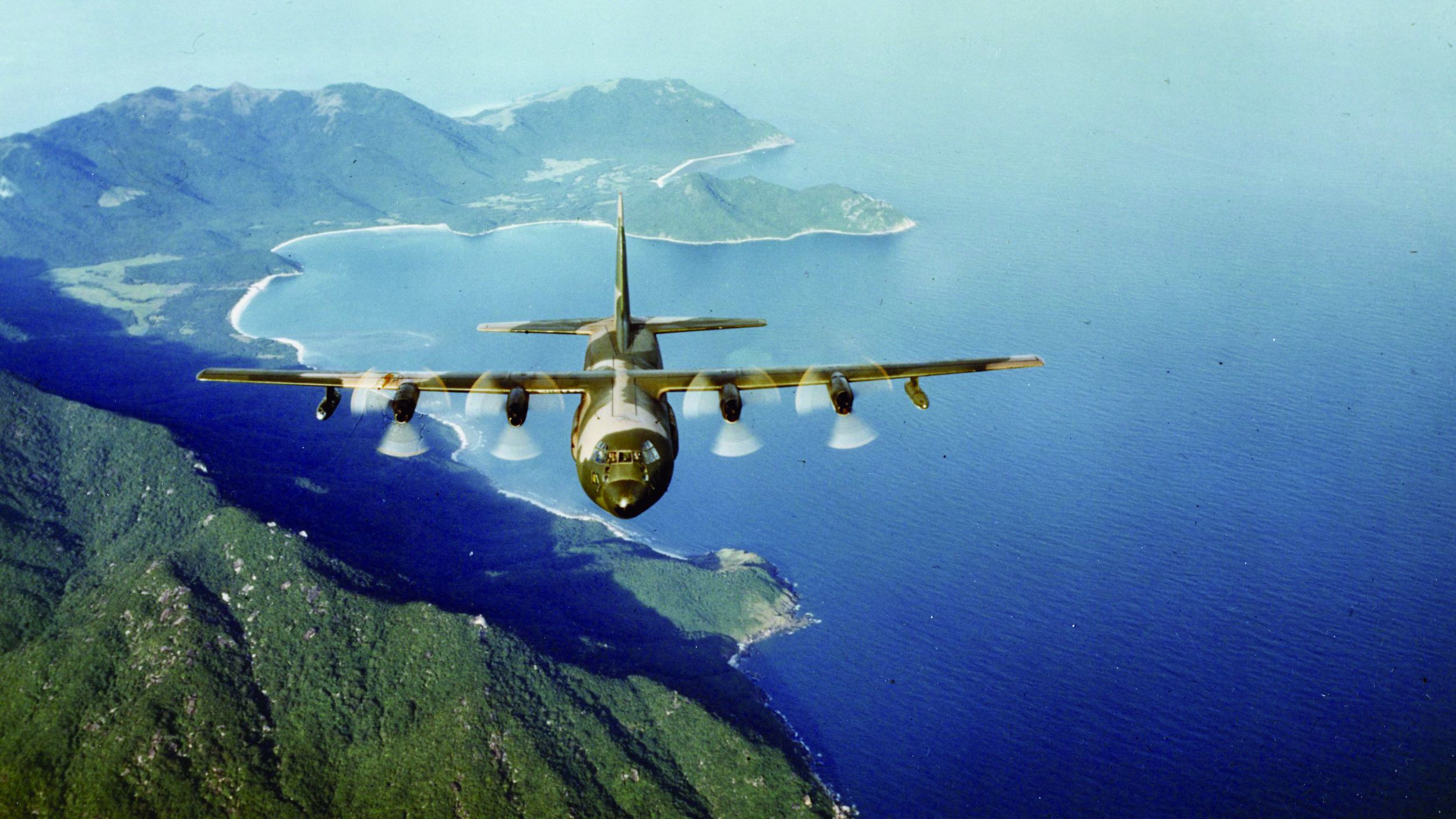
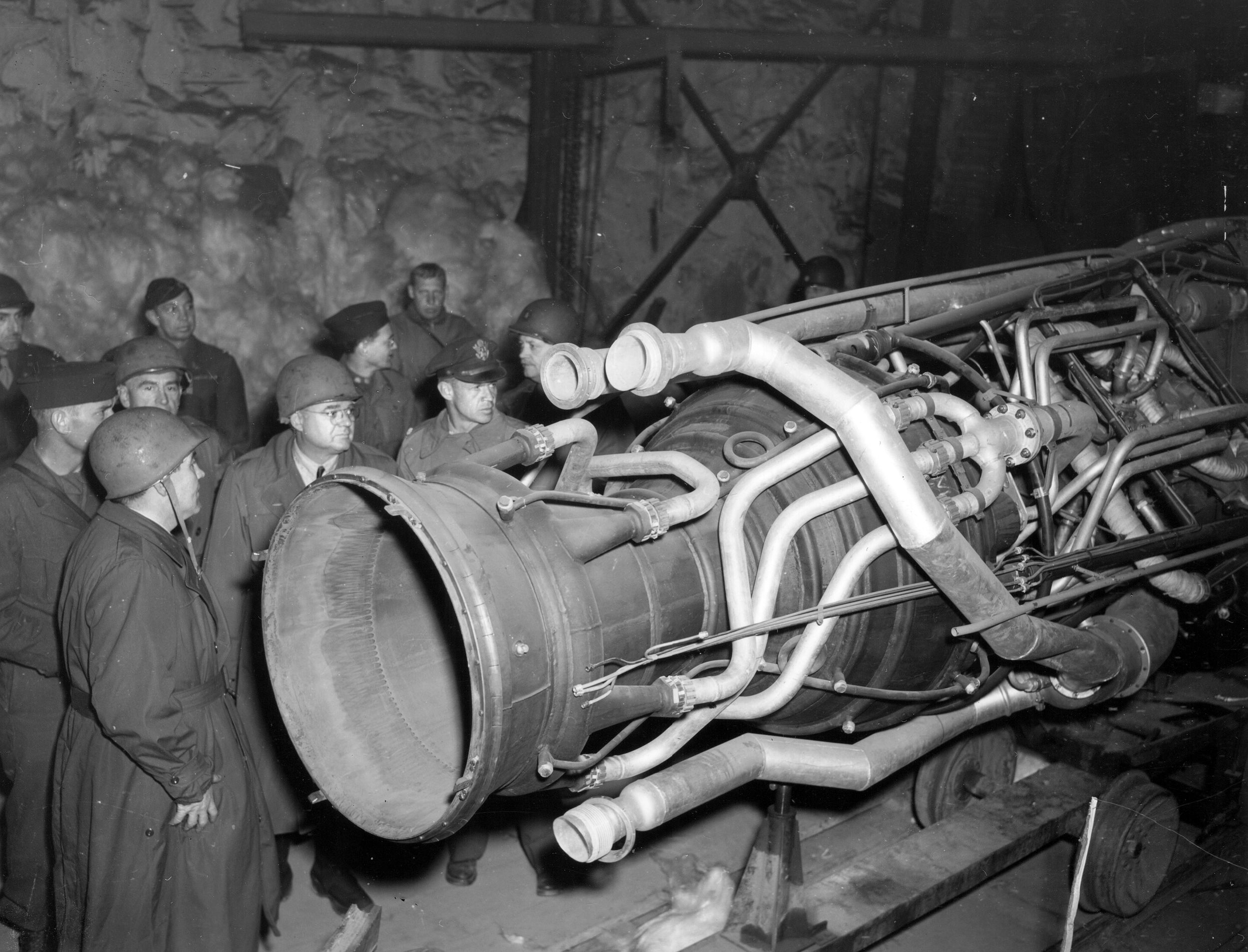

Join The Conversation
Comments
View All Comments